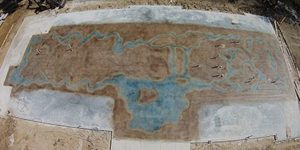Savvy contractors can gain greater project input and can secure more work for their companies by becoming involved with design professionals during the early stages of project design.
Architects, landscape architects and interior designers are key members of the project team for commercial and high-end residential installations. They design the project and are involved with product research and selection. By assuming a proactive role as their design consultant, a contractor gains greater insight into how to bid projects more knowingly and successfully and can assert greater influence on installation outcomes.
Breaking down a design team
First, let’s get to know the various members of a design team and their roles. After you determine which design firms to contact, whom you speak with in the office becomes important. Office staff sizes and personnel vary, but will typically include individuals performing the following functions:
- Project manager (PM) – manages design budget, schedule and staffing
- Project architect (PA) – selects consultants, oversees project designers
- Project designer – designs functional solutions for the owner’s needs
- Staff positions or consultative (contractual) personnel:
- Interior designer – selects interior finishes, designs interior space
- Landscape architect – selects paving materials, designs exterior space
- Specifier/specification consultant –initiates product research, develops construction documents, writes project specifications
Assuming you are contacting a design firm about a particular project, each of the design professionals will require different types of information, depending upon the project stage.
Project stages are chronological project development phases and indicate or direct specific project delivery activities, ultimately leading to the project’s construction. Project stages are standard benchmarks of activity and are generally the same for all construction projects (and construction design firms). Understanding the activities and the individuals involved at each project stage will make your consultative sales call on the design firm more valued by the designer and more productive for you.
Which stage is what
The five stages of project design and construction include project conception, design, construction documentation, bidding and construction. There are specific activities and contractually required deliverables, i.e., graphic and written documentation, associated with each project stage:
Project Conception
- Activities: feasibility studies, project goal-setting, budgeting, site selection
- Documentation: preliminary cost estimates, preliminary scheduling
Design (Two Phases)
- Schematic Design
- Activities: developing a site plan, determining elevations and exterior finishes, conceptual design of structural, mechanical and electrical elements
- Documentation: conceptual plans illustrating relationships between building components, preliminary material selections, revised costs and schedules
- Design Development (Commonly referred to as DDs)
- Activities: identifying constructability issues, selecting specific systems, materials and products
- Documentation: drawings (including plans, elevations and typical details), technical data from manufacturers, revised cost estimates and schedules
Construction Documentation (Commonly referred to as CDs)
- Activities: final design
- Documentation: contracting forms, specifications, contract drawings
Bidding
- Activities: reviewing bids, negotiating, evaluating substitutions
- Documentation: addenda
Construction
- Activities: performing work in accordance with contract
- Documentation: contract modifications
In general, you will be most influential when calling upon a design firm during the project design stage, when the design team is undertaking schematic design and design development activities. It is at this point of a project’s design when designers and owners are evaluating specific material and product choices. Contacts made during project conception may be too early, and contacts made during bidding or even construction documentation stages may be too late.
Depending on the size of the project, unforeseen problems and the owner’s direction, the project stages could be many weeks to many months in duration, with occasional stops and starts.
If your architectural call coincides with the project conception stage, determine when the later design stage will start, schedule a future call to coincide with that predicted time, then move on to another design firm that is doing more stage-relevant work. By keeping track of projects and design firms in this manner, you can ensure focused and productive meetings with designers while creating a significant pipeline of future projects.
Helping the design professional
In addition to timing your office visit or telephone call to a project’s stage, providing the most relevant information for the stage and design professionals involved is equally important. The schematic design and design development stages generally require the most detailed information from you and your suppliers or manufacturers. While members of the project design team may have overlapping needs and involvement during project delivery, a basic understanding of their roles or responsibilities is critical:
Project Manager
- Project stage involvement: project conception, schematic design, design development
- Relevant information: general cost estimates, general product information, project references of similar scope or difficulty, scheduling impacts
Project Architect
- Project stage involvement: design development, construction documents
- Relevant information: refined cost estimates, project references, specific product or manufacturers’ information, scheduling impacts
Project Designer
- Project stage involvement: design development
- Important information: color charts, pattern selection guide, cast samples, color chips, installed costs
Specifier/Specification Consultant
- Project stage involvement: construction documents
- Relevant information: product technical data, guide specifications, installation requirements
You will notice that as a project’s development progresses, the informational requirements of the design team members become more differentiated and precise. For example, the project designer tends to need detailed aesthetic information, while the specifier tends to require more detailed technical information.
As you meet with the design team, ask questions and take notes. What is the budget (so you can offer multiple relevant options)? What are the design professional’s and project owner’s experiences and expectations (so you can offer solutions and establish realistic expectations for aesthetics and maintenance)? Will the project be LEED-certified (allowing you to discuss the sustainable advantages of concrete and related installation technologies and materials)?
The specifier’s influence
Your conversations with the project designer during design development are about product options and recommendations. Generally, you base your recommendations on experience with a particular manufacturer or system. This is quite typical and an acceptable way of incorporating products into a project’s documentation.
The specifier will usually draft the construction documents — specifications — based on the project designer’s selections. However, if the specifier is not familiar with the product or manufacturer selected by the project designer, the specification writer may substitute a system with which he is more knowledgeable or has had successful outcomes on previous projects. The specifier may even rely on an existing office master guide specification and simply cut and paste the necessary information into the current project’s specification — again, bypassing the project designer’s input.
So no matter how well you have educated and impressed other members of the design team, if you don’t understand the specification process in an architect’s office or meet with the specification writer before the specification writing process begins, you may find your earlier efforts diminished. This is an even more critical issue if a design firm relies on an outside or independent specification consultant. Consultants often rely on a master specification to expedite documentation production, since they are producing specifications for several projects and clients.
Product discussions
As you evolve into a consultant’s role, knowing the system you’re recommending, as well as those that compete with it, is important. Your ability and willingness to discuss the qualities of your recommended products compared to alternate or even competitive systems will be appreciated by the architect, since most project specifications require a minimum of three brand names or contain “or equal” and other nonproprietary language.
It is important to note, when discussing your product versus competitive materials, to do so within the context of features and benefits, not by bad-mouthing the competition. Negative selling should never be used to promote your talents or products. The more informed an architect is about product options, the more likely he or she will be to write a specification that is clear, correct and complete. Sharing your knowledge and experience with project designers supports the creation of construction documents without ambiguity, which improves the project bidding and installation process. Sharing your expertise makes the architect look good and elevates your stature in the eyes of the architect.
Architectural marketing
Architectural consulting is a long-term process. It is a form of marketing, with success dependent upon three elements: timing, receptive audiences and relevant stage-specific messages. Implementing your architectural calls in accordance with these three marketing elements provides a framework for successfully bidding and securing more projects, as well as establishing your credentials as a reputable and reliable design consultant.















